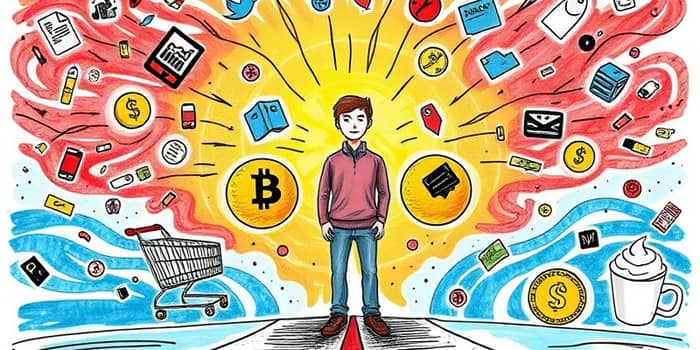
Every day, countless decisions lead us toward our wallets. Sometimes these spending choices feel planned and purposeful. Other times, they seem to spring from nowhere, leaving us puzzled and our budgets strained. Recognizing the hidden catalysts behind these unplanned purchases is the first step toward regaining financial confidence.
In this article, we explore how emotions, social forces, environments, and marketing messages influence our urge to spend. You’ll learn to pinpoint your personal triggers and discover practical ways to curb impulse buying for good.
A spending trigger is anything that sparks an urge to buy, often without real need. These triggers fall into five main categories, each with unique drivers and effects on our behavior.
Understanding why these triggers work can empower you to resist them. One powerful force is dopamine release creates a feel-good sensation when we shop. This chemical reward reinforces the behavior, making us seek that instant thrill again.
Emotional regulation also plays a role. Whether you’re overwhelmed by stress or riding a joy high after a success, shopping can become a handy coping tool. Unfortunately, these short-lived highs often lead to regret when credit card statements arrive.
Today’s easy-access credit and one-click online purchases exacerbate the desire for instant gratification without any delay. Meanwhile, social comparison on platforms like Instagram makes it all too tempting to match the curated lifestyles of peers. According to a 2019 Charles Schwab survey, 35% of Americans admit spending more than they can afford to impress friends, highlighting the powerful pull of peer-driven triggers.
Recognizing these scenarios in your own routine is crucial. Here are familiar examples you might encounter:
The first step to control is awareness. Tracking your spending habits helps you spot the patterns that drive impulse purchases.
Start a simple record of every non-essential purchase and note the context. Ask yourself:
Over time, you’ll see recurring situations—perhaps boredom in the evening leads you to scroll shopping apps, or payday brings a rush that clouds your budget. This pattern recognition is key to taking back control.
Armed with insight into your personal triggers, you can implement targeted strategies. Here are proven tactics to curb impulse spending:
Consider Sarah, a marketing executive who spent hundreds on quick purchases when stressed. By keeping a triggers journal and scheduling regular yoga classes, she redirected her impulse to shop toward moments of calm, cutting her discretionary spending by 30% within three months.
Behavioral psychologists remind us that marketers count on our hardwired responses. Urgency cues like “limited-time” deals and flash sales are crafted to bypass rational decision-making. Recognize that missing one deal isn’t losing out, and you’ll find it easier to opt out.
True emotional well-being rarely stems from material possessions. Building resilience through mindfulness, strong relationships, and meaningful experiences reduces the power of spending triggers. As you practice these strategies, you’ll not only improve your financial health but also cultivate a deeper sense of self-worth.
Your journey toward mindful spending starts with a single insight. Keep identifying, tracking, and reframing. Over time, the urge to spend impulsively will wane, replaced by confidence in every purchase decision you make.
References













